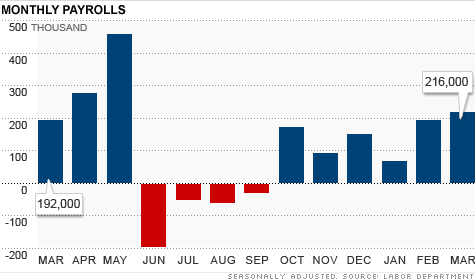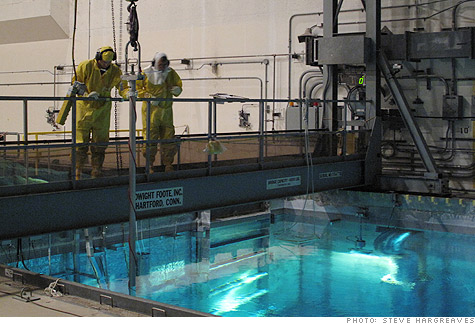By Aidan Lewis

A broken mirror is used on a corner to alert rebels to pro-Gaddafi snipers
Continue reading the main story
Libya Crisis
- Bowen: No easy exit for Nato
- Analysis: A new phase?
- Fearing massacre in Misrata
- Leaders' letter
While parts of Libya's northern coast have been changing hands from day to day, the conflict in Misrata has turned into a lethal stand-off.
Weeks of heavy bombardments by forces loyal to Colonel Muammar Gaddafi have failed to break the deadlock.
This is explained partly by the size of Misrata, Libya's third-largest city.
It is the only significant western rebel holdout, and is strategically important because of its deep-sea port, so rebels have fought hard to defend it.
They have a large pool of potential manpower. Many among the 300,000 population have hardened in their opposition to Col Gaddafi during what Western leaders have compared to a "medieval siege", residents say.
The rebels have a lifeline through the port, which has been fired on but has continued to receive supplies of food, medicine and reportedly arms, while serving as an evacuation point for the injured and for trapped migrant workers.
And they have local knowledge - one reason Col Gaddafi's forces may have been unwilling or unable to engage in decisive open battles.
"The rebels know the entrances and exits to the city very well, they know how to take cover," a medic who lives in Misrata told the BBC.
"[Col Gaddafi's forces] know that if they got stuck inside the city, they would be surrounded and totally eliminated. So they just have some snipers who are protected by tanks."
Gaddafi's brigades
The medic, a supporter of the rebels whose account of recent developments in the city matched other reports, said that about 10 days ago, one sniper surrendered and told the rebels that he was one of up to 60 gunmen operating from within the Tameen (Insurance) building, the tallest building in the area.
Continue reading the main storyMisrata under siege
- See the whole interactive map of Misrata
That number is now thought to have dropped, and rebels have cut off the snipers' resupply routes by forming a roadblock made of lorries loaded with sand.
Rebels say snipers have evacuated a vegetable market down the road that had also been used by pro-Gaddafi forces as a garage and a prison.
A BBC journalist who visited Misrata last week was told that Col Gaddafi's forces were dug in on either side of the city centre, no more than a kilometre away.
Those forces are better equipped than their opponents, with access to heavy weapons, some basic military training, and none of the supply-line problems they face further east.
Continue reading the main storyMISRATA - REASONS FOR DEADLOCK
- Size of city and rebels' local knowledge
- Ability of both sides to get resupply
- Lack of coherent military strategies
Yet the professionalism of the troops has been widely questioned and their numbers are limited.
The Libyan leader has kept his army weak, and his campaign has been led by a handful of brigades commanded by his sons, perhaps 10,000-15,000 men in total.
These are split between Tripoli, Misrata and the east. But Col Gaddafi is said to be reluctant to let even these supposedly "crack troops" operate in numbers greater than a few hundred, in case they desert.
'Terrorising people'
Their approach has centred on a combination of long-distance bombardment and deploying snipers along Tripoli Street, Misrata's front line.
The attacks have not resulted in any military breakthrough, but they have shut the city's normal life down and caused shortages and mounting casualties.
Hospital records show that more than 300 people have been killed, with many more injured. Rebel accounts that more than 1,000 people have been killed cannot be verified.

Clinics in Misrata have been struggling to cope with civilian injuries
Among the armoury used by pro-Gaddafi forces in civilian areas are Russian-made Grad rockets and Spanish-made cluster bombs, according to Human Rights Watch and other reports.
The Grad rockets are fired in a dense and inaccurate pattern, while the cluster munitions - now banned by most countries - release high-velocity fragments and molten metal.
"I think that they are bombing at random and I think this is terrorising the people," said Paolo Grosso, an anaesthetist working at a clinic in Misrata for the Italian branch of the aid agency Emergency.
"They have no military target - they bomb anywhere to scare the population."
One woman who fled Misrata said Tripoli Street was a "war zone" and accused Col Gaddafi's troops of abuses.
"There were corpses in the gutter and in the vegetable market where I buy produce," she told the UN humanitarian news service Irin. "The militia raped women, slaughtered men and killed children."
'Bad image'
That is a picture the Libyan government challenges.
Moussa Ibrahim, a government spokesman, told BBC's Hardtalk that the government was trying to protect civilians from rebels, and that doctors in the city were "trying to give a bad image of Misrata" to encourage Nato intervention.
Continue reading the main story“Start Quote
The weapons [the rebels] have are just enough to defend the city”
End Quote
Misrata medic
Without more direct help from Nato, the Misrata rebels - said to be better organised than those further east - seem unlikely to seize the momentum themselves.
Rubbishing government claims that al-Qaeda inspired militants have been sent to help them, they describe the resistance as an improvised movement of civilians motivated by their anger at Col Gaddafi.
"Since the first days of this conflict, we [the rebels] are taking the defensive position and they are taking the attacking position - the weapons we have are just enough to defend the city," the Misrata medic said.
Coalition air strikes have been reported around the edges of Misrata, but Western officials say they are not willing to risk civilian casualties by directing these within the city, despite loud rebel calls for more muscular Nato action.
"This is a government and a regime that's opted to use the tops of hospitals, of mosques, parking their tanks beside schools and hiding themselves behind men and women to makes sure that we do not attack them," Lt Gen Charles Bouchard, the head of Nato operations in Libya, told the BBC World Service.
"So when we talk about action, one has to be mindful of all of these factors."
But even the possibility of further Western intervention may be a deterrent, with the Misrata medic saying on Monday that government forces had withdrawn some tanks and heavy artillery.
"Right now it looks like they are afraid," he said.








































Are you in Libya? Have you been affected by the unrest? You can tell us your experiences using the form below.